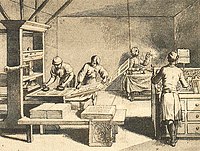
Photo from wikipedia
Abstract Small-size stellarator devices with high-temperature-superconducting (HTS) magnetic coils could improve magnetic confinement performance and enable rapid diagnostics of new confinement regimes. In this context, 3D printing with acrylonitrile butadiene… Click to show full abstract
Abstract Small-size stellarator devices with high-temperature-superconducting (HTS) magnetic coils could improve magnetic confinement performance and enable rapid diagnostics of new confinement regimes. In this context, 3D printing with acrylonitrile butadiene styrene (ABS) polymer could be a low cost and rapid manufacturing method that allows the fabrication of relatively complex shapes. However, high precision and geometric complexity are required for stellarator components. Additionally, the combined utilization of HTS magnetic coils and ABS components may require the exposure of ABS components to cryogenic environments. Therefore, this research tested the mechanical performance of additively manufactured ABS at 77 K and correlated its mechanical properties to 3D printing settings. This will allow further mechanical stability analysis about the combined implementation of HTS magnetic coils and additively manufactured ABS components. In this article, Young’s Modulus, Yield Strength and Ultimate Strength at room temperature (RT) and 77 K of additively manufactured ABS are explored while varying layer thickness, raster pattern and infill percentage as 3D printing settings. Conclusions about the influence of each 3D printing setting on each mechanical property are presented.
Journal Title: Additive manufacturing
Year Published: 2021
Link to full text (if available)
Share on Social Media: Sign Up to like & get
recommendations!